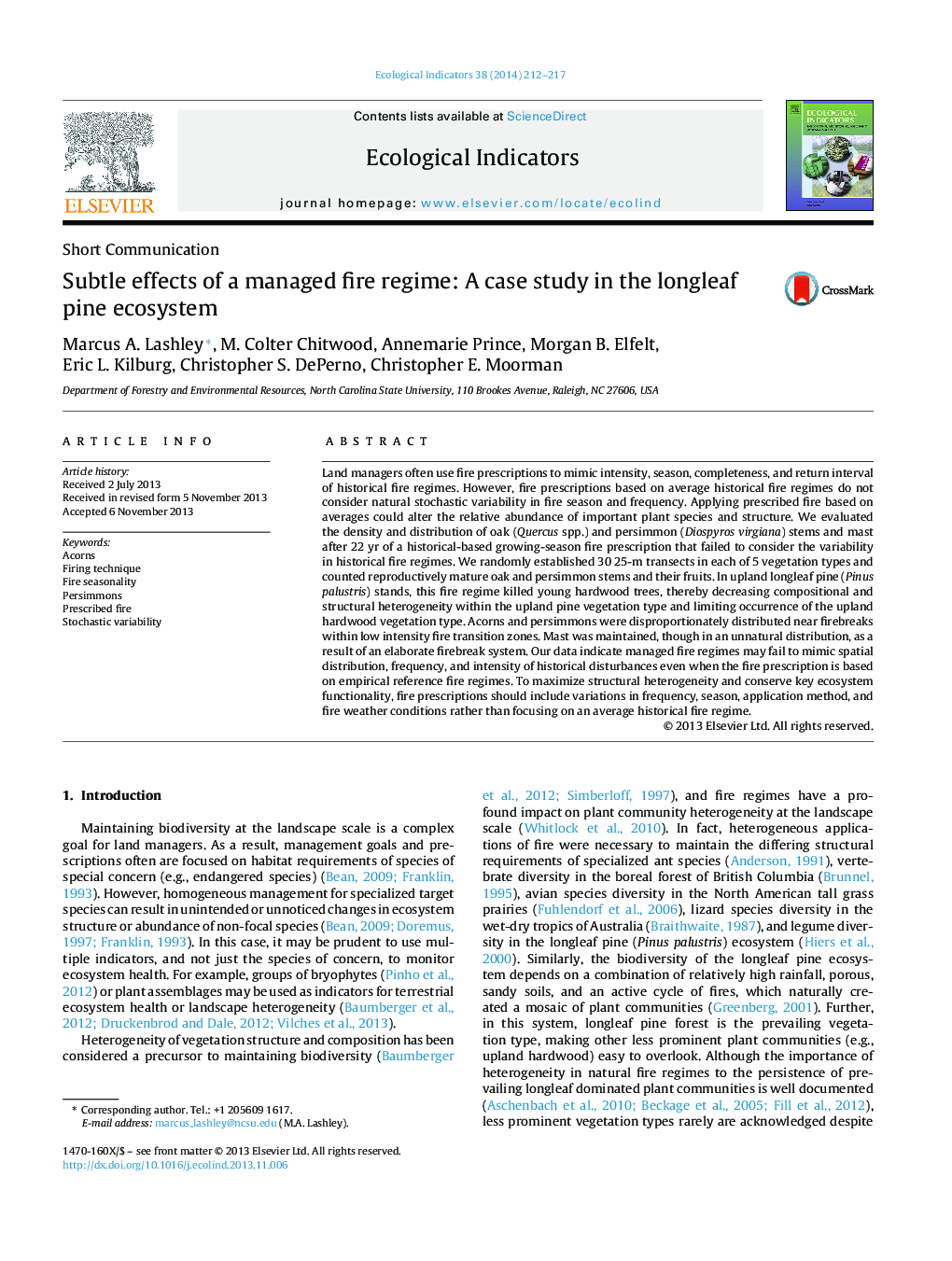| کد مقاله | کد نشریه | سال انتشار | مقاله انگلیسی | نسخه تمام متن |
|---|---|---|---|---|
| 6295189 | 1617163 | 2014 | 6 صفحه PDF | دانلود رایگان |

- Fire regimes have moved toward ecosystem-based management approaches.
- Disturbance regimes were applied based on average historical disturbance records resulting in homogenous fire applications.
- Homogenous fire applications fail to promote all plant species.
- Hardwoods and mast were not present internally in upland pine stands as a result of firing techniques.
- Mast availability was artificially maintained by an elaborate firebreak system.
Land managers often use fire prescriptions to mimic intensity, season, completeness, and return interval of historical fire regimes. However, fire prescriptions based on average historical fire regimes do not consider natural stochastic variability in fire season and frequency. Applying prescribed fire based on averages could alter the relative abundance of important plant species and structure. We evaluated the density and distribution of oak (Quercus spp.) and persimmon (Diospyros virgiana) stems and mast after 22 yr of a historical-based growing-season fire prescription that failed to consider the variability in historical fire regimes. We randomly established 30 25-m transects in each of 5 vegetation types and counted reproductively mature oak and persimmon stems and their fruits. In upland longleaf pine (Pinus palustris) stands, this fire regime killed young hardwood trees, thereby decreasing compositional and structural heterogeneity within the upland pine vegetation type and limiting occurrence of the upland hardwood vegetation type. Acorns and persimmons were disproportionately distributed near firebreaks within low intensity fire transition zones. Mast was maintained, though in an unnatural distribution, as a result of an elaborate firebreak system. Our data indicate managed fire regimes may fail to mimic spatial distribution, frequency, and intensity of historical disturbances even when the fire prescription is based on empirical reference fire regimes. To maximize structural heterogeneity and conserve key ecosystem functionality, fire prescriptions should include variations in frequency, season, application method, and fire weather conditions rather than focusing on an average historical fire regime.
Journal: Ecological Indicators - Volume 38, March 2014, Pages 212-217